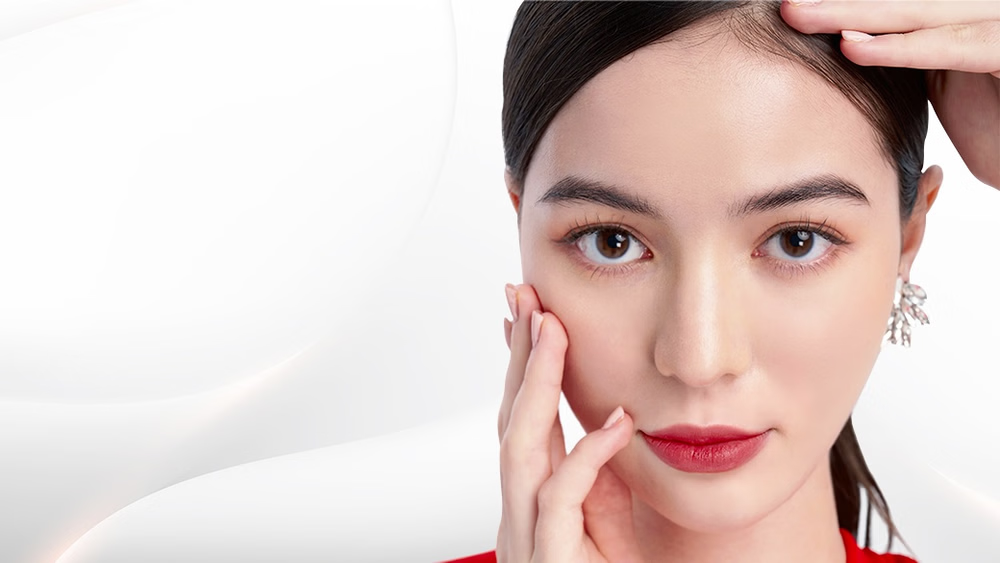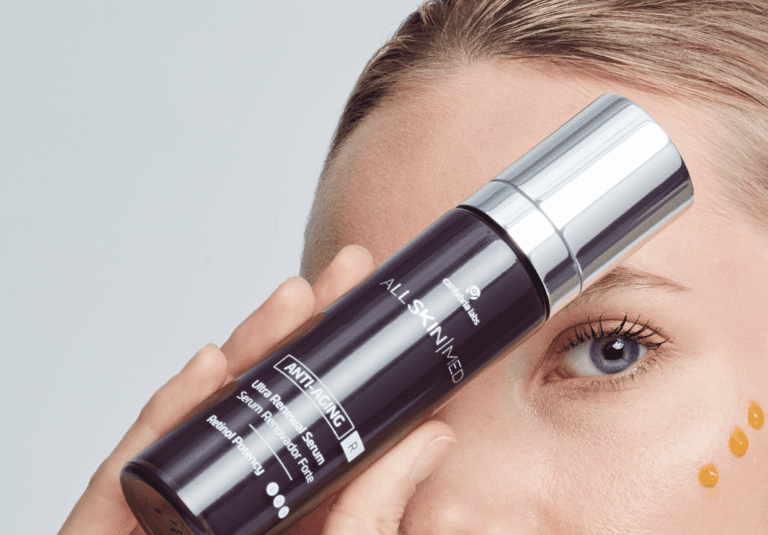Skin
LilyAna Naturals Face Cream Review
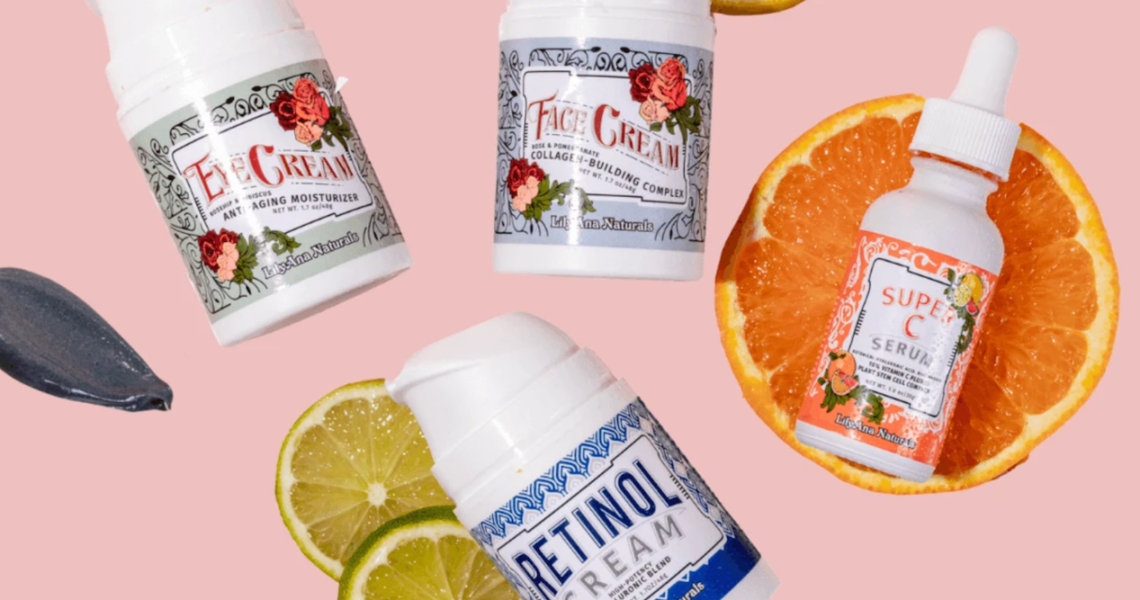
Lily Ann Naturals: The LilyAna Naturals face cream moisturizer brings the anti-aging skin care regimen up another level. This product uses premium ingredients and avoids harsh chemicals to make their product more poignant. The light rose and pomegranate scent of the LilyAna Naturals face creams makes for a wonderful spa-like aroma to the product. Are your anti-aging needs fitting for the use of the LilyAna Naturals face cream? Sit back and relax while you read on about the features, pros, and cons of the LilyAna Naturals moisturizer. Introducing LilyAna Naturals Face Cream:
- Anti-oxidant enriched
- 1.7-ounce bottle
- Great price point
- Made without the use of harmful chemicals
- Anti-aging qualities
- Improves skin discoloration
- Made in USA
- Vegan
- Animal cruelty-free
- Improved packaging
Anti-Oxidants
The LilyAna Naturals cream aims to succeed in resisting wrinkles and fine lines by utilizing various anti-oxidant ingredients. Anti-oxidants help to keep free radicals away from damaging your skin. Anti-oxidants are the best way to fight the damaging effects of aging, discoloration, and sun damage.
Friendly Ingredients
Lily Ann Naturals: The vegan and animal cruelty-free ingredients in the cream are also capable of improving skin discoloration along with fighting wrinkles. The ingredients that help to heal and repair the skin include the likes of the skin helpful vitamins C and E. Other natural and gentle ingredients within the product include aloe vera, orange extract, rose, and other various oils and anti-oxidant ingredients.
Ingredients Include:
Rose Distillate, Aloe Vera Juice, Kosher Vegetable Glycerin, Avocado Oil, DMAE, Emulsifying Wax NF, Meadowfoam Seed Oil, Pomegranate Fruit Extract, Organic Orange Fruit Extract, Organic Lemon Extract, Organic Cranberry Extract, Vitamin E, Vitamin C Ester, Ethylhexylglycerin, Phenoxyethanol, Coenzyme Q10, Pro Vitamin A, Vitamin A, Alpha Lipoic Acid DL- Thioctic Acid, Panthenol Vitamin B5, Vitamin B3, Carrot Oil, Lecithin, Citric Acid
No harmful or artificial chemicals are permitted to hamper the anti-aging benefits of this moisturizer. Avoiding parabens, harmful chemicals, and artificial chemicals helps to keep the focus of the beauty product on healing the skin rather than just using skin-harming filler ingredients.
According to the Washington Post article “Are parabens and phthalates harmful in makeup and lotions?”, parabens are viewed as potentially damaging to hormone systems in the body. It makes sense why paraben-free would result in positive anti-aging benefits, as a paraben-free product won’t disrupt your body’s healthy hormone levels.
Packaging
Home Grown
The LilyAna Naturals products are all made in the United States. The beauty brand’s anti-aging moisturizer is no exception. American citizen beauty consumers who prefer to buy products from their home country will likely appreciate this product.
Pros and Cons of LilyAna Naturals Face Cream
- Anti-Aging
- Premium Ingredients
- Useable on All Skin Types
The main pro of the LilyAna Naturals face cream is foremost that it is anti-aging. The benefits include reduction of fine lines, wrinkles, dryness, and skin discoloration. The product does this effectively by use of gentle premium ingredients. This moisturizer is effective in fighting aging because it does not use harmful chemicals. The product does not contain any parabens, artificial scents, and artificial colors. This makes the product that much stronger and more impactful at improving skin’s complexion.
- Small Bottle
- Rose and Pomegranate Scent Isn’t Liked by Every Consumer
Lily Ann Naturals: Based on customer reviews, the cons of this product consist of the bottle being somewhat small and the scent isn’t for everyone. The bottle is only 1.7 ounces. It is a fairly inexpensive product, so it is reasonable to purchase a few bottles at a time if you go through the product quickly. The scent is a combination of rose and pomegranate. Many customers love the scent. A few have said that the smell is not for them though. If you know that you are allergic to or dislike roses and pomegranates, then this product is not for you.
The Low-down on LilyAna
The LilyAna Naturals moisturizer is for you if you need a gentle, nourishing choice for your skincare routine. The anti-oxidant-rich product will give you the skin revitalization you need. The rose and pomegranate scent will keep you feeling refreshed and ready for your day. If these are some of the qualities you are looking for in a face cream then you might want to give the LilyAna Naturals moisturizer a chance to improve your anti-aging game.
Skin
How to Use Global Beauty Care Retinol Skin Cream
Skin
The Rarest Type of Nose: An Exploration of Distinction

The nose, a centerpiece of human physiognomy, stands as a hallmark of individual identity. While its primary functions—facilitating respiration and detecting aromas—are universal, the diversity in nasal forms is both staggering and fascinating. Some nose shapes dominate populations, while others are so rare they elicit wonder. But what, precisely, constitutes the rarest type of nose? Let us traverse the realms of anatomy, genetics, and cultural resonance to uncover the answer.
Anatomy and Variation: The Underpinnings of Nasal Uniqueness
Before delving into the extraordinary, it’s essential to comprehend the fundamental structure of the nose and the elements shaping its distinctiveness.
Structural Components of the Nose
- Nasal Bones: Form the upper bridge, lending foundational rigidity.
- Cartilage: Confers flexibility and shapes the tip and lateral contours.
- Nasal Septum: Divides nostrils, ensuring balanced airflow.
- Soft Tissue: Adds curvature and dynamic movement to the nose.
These elements, influenced by heredity, ethnicity, and environment, orchestrate a nose’s architecture.
Determinants of Nasal Morphology
- Genetic Blueprint: Nasal shape emerges from an intricate genetic interplay.
- Ethnic Adaptation: Ancestral climates mold nasal forms; slender noses prevail in frigid zones, while wider noses dominate humid locales.
- Age and Trauma: Time and injuries can subtly transform nasal aesthetics.
Recognizing Familiar Nose Types
Common nasal shapes abound across global demographics. Understanding these helps us appreciate the uniqueness of rarer forms.
- Roman Nose: Distinguished by a prominent, gently arched bridge; often depicted in classical sculpture, prevalent in European lineages.
- Button Nose: Petite and rounded with a slightly uplifted tip, often evoking youthful charm.
- Straight Nose: A linear bridge devoid of dips or curves, revered for its symmetry.
- Nubian Nose: A broad base coupled with an elongated bridge, celebrated within African diasporas for its striking allure.
- Hawk Nose: This shape exudes boldness, featuring a pronounced downward curve reminiscent of a raptor’s beak.

A rarity in Nasal Forms
Rare nasal configurations arise from genetic anomalies, evolutionary adaptations, or developmental peculiarities.
Noteworthy Rare Noses
- Fleshy Nose: Bulbous with pronounced soft tissue, less prevalent than streamlined shapes.
- Celestial Nose: Marked by a concave bridge and uplifted tip, its rarity lies in the pronounced upward tilt.
- Pinched Nose: A slim and tapered form, occasionally the result of surgical intervention or specific genetic traits.
The Pinnacle of Rarity: Uncommon Combinations
The rarest nose transcends individual traits, merging several uncommon attributes into one visage. For instance, a celestial nose paired with a profoundly sharp tip and exaggerated curvature is exceptionally unusual.
Genetic Conditions Yielding Unique Noses
- Binder Syndrome: Leads to an underdeveloped nasal bridge.
- Pierre Robin Sequence: Affects facial structure, creating recessed nasal features.
Cultural Perceptions of Rare Noses
Societal lenses magnify the significance of rare nose shapes, attributing symbolic and aesthetic value across epochs.
- In Media and Fashion: Unique noses captivate audiences, positioning their bearers as icons of individuality.
- Historic Standards: Ancient Egyptians prized slender noses for their perceived elegance, while Roman society lauded aquiline noses as emblems of authority.
- Contemporary Movements: Social media champions diversity, fostering an appreciation for distinctive features.
Genetics: The Architect of Nasal Rarity
Heredity and Evolution
- Inheritance Patterns: Unusual features often emerge from recessive traits passed discreetly through generations.
- Evolutionary Influence: Narrow noses, adapted for frigid air, and broad noses, efficient in humid climates, showcase humanity’s adaptability.
Surgical Crafting of Rare Noses
Modern rhinoplasty offers the possibility of replicating rare nasal forms, albeit with caution.
- Rhinoplasty Trends: Precision is paramount when emulating rare features.
- Balancing Risks: Overcorrection risks functional issues, underscoring the need for moderation.
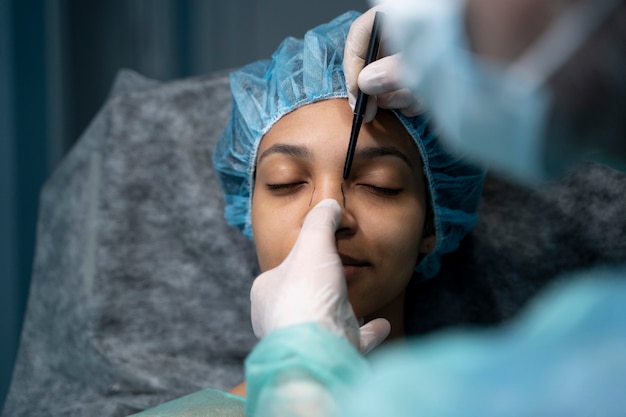
Embracing Nasal Uniqueness
Whether common or extraordinary, the nose is a personal signature. Celebrating its individuality fosters self-acceptance and underscores humanity’s rich tapestry of diversity.
Conclusion
The rarest nose type defies singular definition, arising from a confluence of exceptional traits shaped by heredity, environment, and cultural perceptions. Its rarity enriches the spectrum of human beauty, reminding us that uniqueness is a virtue worthy of reverence.
FAQs
- What governs nasal shape?
Hereditary factors, cartilage structure, and environmental influences shape nasal appearance. - Can nasal shape evolve over time?
Yes, age and physical trauma can alter its form. - Are rare noses universally admired?
Attractiveness is subjective; rare noses often gain admiration for their distinctiveness. - Can surgery replicate rare shapes?
Yes, but achieving natural-looking results requires meticulous precision. - What’s the most prevalent nose type?
Button and Roman noses are among the most ubiquitous globally.
Skin
Eczema and Psoriasis on the Feet: Visuals, Root Causes,

Eczema and psoriasis stand among the most prevalent skin disorders affecting individuals across the globe. When these conditions manifest on the feet, they can cause significant discomfort and pose aesthetic dilemmas. This article delves into the origins, manifestations, and remedial options for eczema and psoriasis of the feet, supplemented by illustrative depictions.
Understanding Eczema: How It Manifests on the Feet
Defining Eczema and Its Underlying Triggers
Eczema, medically termed atopic dermatitis, is a chronic dermatological ailment characterized by inflammation, redness, and relentless itching. Common catalysts include allergic reactions, environmental irritants, and inherited predispositions.
Symptoms of Eczema on the Feet
- Parched, fissured skin.
- Reddened and swollen areas.
- Persistent itch, often intensifying nocturnally.
- Formation of vesicles in severe instances.
Visual Representations of Eczema on Feet
Individuals afflicted may observe inflamed, reddened patches or blistering. Imagery frequently aids in accurate visual diagnosis.
Psoriasis: A Chronic Autoimmune Condition with Distinctive Features
What Defines Psoriasis?
Psoriasis emerges as a chronic autoimmune disorder, spurring the overproduction of epidermal cells. This surplus accumulates, forming plaques frequently observed on the feet.
Manifestations of Psoriasis on the Feet
- It thickened, flaky skin.
- Reddish plaques are often veiled with silvery scales.
- Painful fissures or cracks in the skin.
- Nails may exhibit changes indicative of nail psoriasis.
Visual Evidence of Psoriasis on Feet
Typical depictions reveal heavily scaled skin with a silver-tinged overlay, highlighting the distinctiveness of this condition.

Differentiating Between Eczema and Psoriasis
Key Visual Contrasts
- Eczema: Features redness, oozing vesicles, and pronounced itchiness.
- Psoriasis: Exhibits dry, flaky plaques with silvery layers.
Diverging Etiologies
Eczema is often rooted in allergic hypersensitivity, whereas an autoimmune response drives psoriasis.
Treatment Modalities for Eczema and Psoriasis
Managing Eczema
- Moisturizing Agents: To counteract dryness.
- Topical Corticosteroids: For reducing inflammation.
- Allergen Avoidance: Identifying and steering clear of triggers.
- Natural Remedies: Coconut oil or colloidal oatmeal baths for soothing relief.
Treating Psoriasis
- Topical Applications: Corticosteroids or Vitamin D derivatives.
- Phototherapy: Exposure to UV light.
- Systemic Medications: Biologics or oral therapies for advanced cases.
- Home Solutions: Aloe vera or saline baths to ease symptoms.

Preventive Strategies for Eczema and Psoriasis on Feet
Skincare Routine
- Daily hydration with emollients.
- Use of gentle cleansers to avoid irritation.
Avoidance of Triggers
- Wearing breathable footwear.
- Mitigating stress, a known exacerbator of psoriasis.
Conclusion
Eczema and psoriasis affecting the feet can profoundly impact the quality of life. Through precise diagnosis, bolstered by visual indicators, and effective treatments, sufferers can find substantial relief. Consistent skin care and proactive avoidance of known triggers are indispensable in preventing recurrences.
FAQs
- How does foot eczema differ from fungal infections?
Eczema often presents as redness and dry skin, while white patches and a pungent odor typically mark fungal infections. - Can children develop eczema or psoriasis on their feet?
Yes, eczema is especially common among younger individuals. - What is the typical duration for treating foot psoriasis?
Treatment timelines vary based on severity, with chronic cases requiring long-term management. - Is it possible to have both eczema and psoriasis concurrently?
Although rare, it is feasible to experience both conditions simultaneously, necessitating distinct treatment plans. - Is there a definitive cure for psoriasis?
While psoriasis cannot be eradicated, its symptoms can be effectively managed through appropriate interventions.
-

 Skin9 months ago
Skin9 months agoNatural Oil-Free Face Moisturizer Reviews & Buyers Guide
-

 Hair3 weeks ago
Hair3 weeks agoDoes a Flat Iron Kill Lice? Fact or Myth?
-

 Hair9 months ago
Hair9 months agoDoes a Flat Iron Kill Lice? Fact or Myth?
-

 Skin8 months ago
Skin8 months agoAbout Face Beauty: Tips for Enhancing Your Natural Beauty
-

 Hair9 months ago
Hair9 months agoFunction of Beauty: Personalized Hair Care for Your Unique Needs
-

 Skin8 months ago
Skin8 months agoBeautiful Nails: Tips and Tricks for Healthy and Gorgeous Nails
-

 Hair9 months ago
Hair9 months agoTitanium Flat Iron vs. Ceramic
-
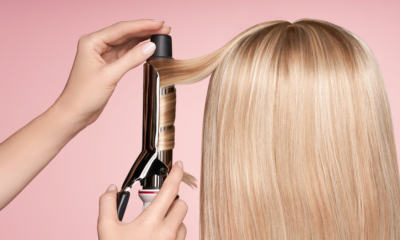
 Hair9 months ago
Hair9 months agoHow to Curl Your Hair with a Flat Iron for Beginners

